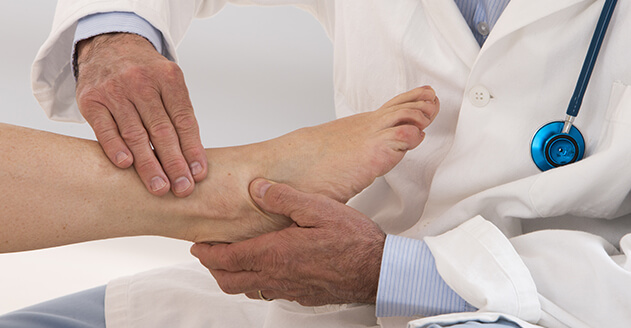MyPainClinic we believe that the highest level of quality healthcare is unachievable without employing the finest technology. This is a belief that reflects on every single aspect of our fully-equipped facility. Together, our team and our technology have helped us offer a comprehensive At MyPainClinic is a healthcare initiative by dedicated medical professionals, aimed towards all the people of the local community. At on-site service under one roof. There is on-site physical therapy and rehabilitation section managed by an experienced physical therapist. Also, we are always the first ones to introduce latest techniques and care in Pain Management, and Rehabilitation.

Ankle Pain
An ankle is a joint on a human body and other animals that connects the foot with the leg. The ankle includes three joints: the ankle joint proper or talocrural joint, the subtalar joint, and the inferior tibiofibular joint. The movements made at this joint are dorsiflexion and plantarflexion of the foot. In common usage, the term ankle refers exclusively to the ankle region. In medical terminology, “ankle” (without qualifiers) can refer broadly to the region or specifically to the talocrural joint.
The main bones of the ankle region are the talus (in the foot), and the tibia and fibula (in the leg). The talocrural joint is a synovial hinge joint that connects the distal ends of the tibia and fibula in the lower limb with the proximal end of the talus. The articulation between the tibia and the talus bears more weight than that between the smaller fibula and the talus.
The ankle is one of the main joints that help the humans and the animals in the locomotion. Any kind of moderate to severe pain can arise difficulties in locomotion.
Causes
Ankle pain can arise due to ankle sprains and strains, sometimes due to ankle instability, arthritis, gout, tendonitis, fracture or nerve compression.
Common
Your ankle joint consists of bones, muscles, cartilage, and tissues called ligaments and tendons. Injury or disease that affects any of these ankle structures may cause pain. In the end, becoming familiar with these unique diagnoses can help you prepare for the visit with your doctor, whether that is your primary care physician, podiatrist, orthopedic surgeon, or an emergency care provider
Sprains
An ankle sprain refers to an injury of one or more ligaments (tough, fibrous tissues that connect bone to bone). Ankle sprains are common injuries that may be caused by stepping off a curb, walking on an uneven surface, having a fall, or while engaging in a sport, like tennis or basketball, where a rapid change in direction causes the ankle to roll or twist inward.
Diagnosis
Many ankle conditions can be diagnosed with a medical history, physical exam, and X-ray. Other conditions require a bit more of a work-up, including additional imaging tests and/or blood tests.
- X-ray. Your doctor may first recommend having an X-ray, which can help detect bone fractures and degenerative joint disease.
- Computerized tomography (CT) scan. CT scanners combine X-rays taken from many different angles, to create 3-D images of the inside of your body. CT scans can help diagnose bone problems.
- Ultrasound This technology uses sound waves to produce real-time images of the soft tissue structures within and around your knee, and how they are working. Your doctor may want to maneuver your knee into different positions during the ultrasound.

Symptoms of ankle pain
Some of the apparent symptoms that a patient might experience are:
- Ankle swelling
- Bruising
- Redness
- Numbness or tingling
- Instability
- Burning pain
- Inability to bear weight on the affected ankle
- Stiffness
- Weakness
Non-surgical treatment and medications
- Rest: Rest the joint and allow the acute inflammation to subside. Sometimes this is the only step needed to relieve mild ankle pain.
- Ice: Ice bags or cold gel packs are among the most common treatments for ankle pain and should be applied for 15 to 20 minutes.
- Elevation: Raising your ankle above the level of your heart (by propping your foot on pillows) can help reduce swelling for the first couple of days after an ankle injury.
Support and Stability Items
Depending on the type of injury, crutches or a cane, ankle braces or splints, orthotics, and/or a cast may be necessary. The specific injury and its cause will determine which of these will be recommended by your doctor.
Physical Therapy
Physical Therapy is commonly utilized for many ankle diagnoses, including strains, tendonitis, and after an ankle surgery. Physical therapists use various rehabilitation exercises to increase your ankle muscle strength, regain mobility, minimize stiffness, and prevent chronic ankle problems.








